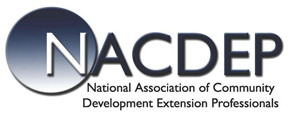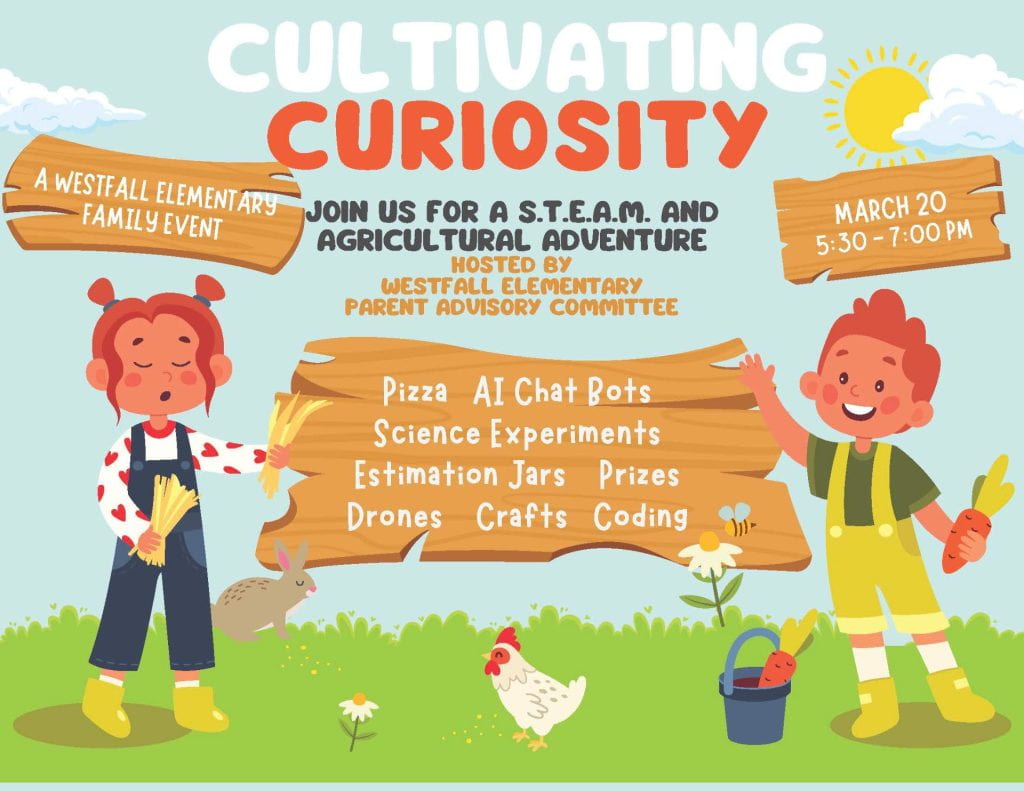Meghan Thoreau, OSU Extension Educator
Poster presentation for the National Association of Community Development Extension Professionals (NACDEP) at the 2023 Conference held April 30 – May 3, 2023, in Couer d’Alene, Idaho.

NACDEP is an organization dedicated to improving the visibility, coordination, professional status, and resource base of community and economic development Extension programs and professionals.

PROGRAM PARTNER ACKNOWLEDGEMENT
Meghan Thoreau, OSU Extension Educator, partnered with Pickaway Pathways to Success which received a $5,000 Start-up Grant from Battelle to implement a drone pilot course and supply drone technology for flight practice. Meghan completed a 13-module certification program from the Unmanned Safety Institute receiving her Level 1 sUAS Safety Certification to teach the remote piloting course at Pickaway Pathways to Success.
INTRODUCTION
A pilot-project 13-module Drone Piloting Certification Program offered by an OSU Extension Educator teaches students the Fundamentals of Aviation, Unmanned Aerial System Career Pathways, and regulations and use cases of drone technologies. Students are offered four credentialing opportunities seen as the benchmarks needed to enter and advance in specific industries like Drone Technologies and Remote Piloting.

HUMAN CAPACITY BUILDING
The United Nations describes Human Capacity Building as the “process of developing and strengthening the skills, instincts, abilities, processes, and resources that organizations and communities need to survive, adapt, and thrive in a fast-changing world.” How are Extension Professionals adapting and building human capacity into their workforce development programming? The Youth Remote Drone Pilot Program highlights one Extension Educator’s efforts in developing a pilot program that builds new skills, abilities, and credentialling opportunities that can be directly applied to the workforce.
DEMAND FOR DRONE PILOTS IS SOARING
According to Research, Markets, and Scholarly Publications, the demand for drone pilots is expected to grow by 50 percent over the next five years, with sales projected to reach over $16 billion by 2030.1 The Federal Aviation Administration (FAA), in 2016, granted new exemptions to commercially operate drones in the U.S. through the FAA Part 107 remote pilot certificate. In 2020, a drone pilot became a viable, well-paying career option.2 Now is the time for Extension professionals to rethink how they program in their counties and develop new, creative, and meaningful programs that elevate human capacity building, and economic development, and expand their workforce.
THE UNMANNED SAFETY INSTITUTE
The Unmanned Safety Institute (USI) curriculum was adopted by the Center for Aviation Studies at the Ohio State University which established a partnership with the institute and used its curriculum in its aviation courses. USI’s e-learning environment has three advancing stages structured in levels of curriculum as well as select certificate programs to acquire.

OSU EXTENSION’S FIRST YOUTH DRONE PILOT CREDENTIALING PROGRAM
The Small UAS (sUAS) Safety Certification Program includes required aeronautical knowledge for remote pilots of UAS less than 20 pounds and introduces learners to USI’s industry-leading safety principles. The curriculum includes all pertinent aeronautical knowledge factors used by the FAA for the Unmanned Aircraft General (UAG) examination for the Remote Pilot Certification and integrates those with safety concepts and practices to develop well-informed and responsible remote pilots. Students who successfully complete the course receive four credentialing opportunities:
Students should also be prepared to pass the UAG exam and industrial certification exam to obtain their:

13 ONLINE-UNIT COURSE MODULES
1. Introduction to unmanned aircraft systems: terminology, major issues associated with sUAS, and core components of an unmanned system. Students go through an aeronautical knowledge and safety test to receive their Recreational UAS Safety Test (TRUST), which is required for recreational use and provides education and important safety and regulatory information.
2. Unmanned Aircraft: sub-components of UA and the factors affecting UAS aerodynamics and performance.
3. Elements: the environment where sUAS and remote pilots operate.
4. Regulations: limitations and authorities vested in remote pilots by 14 CFR 107.
5. Operating in the National Airspace: FAA rules and policies for operating in the National Airspace System.
6. Human Factors of UAS and CRM: human limitations that contribute to errors and violations that can be the causal factors in UAS accidents. Crew Resource Management (CRM) introduces non-technical skills used to combat human errors.
7. Aeronautical Decision Making: the process of assessing risks and examining the decision-making process.
8. Professionalism: ethical and legal requirements of the Remote Pilot in Command (RPIC). Establishes standards of practice and explores careers in unmanned aviation.
At this point, students should have received the Recreational UAS Safety Test (TRUST) and be prepared to take the exam for the Part 107 Remote Pilot Certificate.

9. UAS Foundations: history of UAS and solving problems facing the traditional aviation sector.
10. Robotic Aircraft: Examines the robotics of an aircraft, aerodynamics of sUAS, the forces acting on aircraft, how to utilize control surfaces and changes in rotor speeds to induce moments and forces on aircraft, and how aircrafts maneuver through the air.
11. Datalinks: how to communicate back and forth from the air vehicle to the ground control station and vice versa.
12. UAS Control: advancements in ground station development and the advantages and disadvantages of this modified and simulated cockpit.
13. Payloads: sensors and science behind the acquisition of environmental information from a sUAS flying overhead.
After the 13 units, students receive their sUAS Safety Certification from USI and should be prepared to take the industrial certification exam for Industrial Credential Badge.

RESULTS
Extension Educators can be a part of educating, training and certifying this elite group of participants to support new aviation leaders, innovators, visionaries, and remote pilots. Student participants will complete the program in the Fall of 2023, with strong demand for future programming.
Initial feedback and student evaluation are very positive, and end-of-term evaluations will be collected to continue to redesign and improve the program for the following year. Evaluation questions will also measure the youth’s understanding of unmanned technology, regulations, safety best practices, and the payloads for commercial uses. The goal of the program is to promote aviation-based safety standards and empower a young industry cluster of experts with the knowledge and skillset necessary to professionally excel in this industry.
OUTCOME
Participants will complete 13 module units, 20 hours of flight practice, received their Recreational Safety TRUST Certification, take the Part 107 exam, and schedule their Industrial exam for Industrial Diploma.
IMPLICATIONS & RECOMMENDATIONS FOR PRACTICE
Practical applications for the Extension community interested in programming around drone remote piloting certification, this project provides a framework and lessons learned in this topical area, for other members of the community this work may generate ideas and break down barriers of what is possible for Extension Educators to take on. We as Educators can never stop learning and keeping a growth mindset to our program development. This presentation focuses on the aviation industry and the workforce that will supply the unmanned community. This program builds on safety, respect, excellence, and responsibility, and empowers both the Educators and their participants by expanding their opportunities in life, education, and work.
References:
1 Demand for drone pilots soars UAV jobs that pay over $100K. Vaughn College. (2022, August 12). Retrieved April 14, 2023, from https://www.vaughn.edu/blog/demand-for-drone-pilots-soars-uav-jobs-that-pay-over-100k/
2 Pilot Institute. (2022, January 25). What kinds of jobs can drone pilots do? Pilot Institute. Retrieved April 14, 2023, from https://pilotinstitute.com/drone-jobs/






















 Day 1: June 10th, 8:00 a.m. to 1:00 p.m., (optional CPR Certification, 1:00 p.m. to 3:30 p.m.)
Day 1: June 10th, 8:00 a.m. to 1:00 p.m., (optional CPR Certification, 1:00 p.m. to 3:30 p.m.)




























 The Popular Annual Financial Report provides a concise summary of the financial condition and activities of Pickaway County. The report is designed to promote transparency in government while educating the public by providing a summary of the county’s finances, taxes, services, and useful reference materials in a readable and understandable format.
The Popular Annual Financial Report provides a concise summary of the financial condition and activities of Pickaway County. The report is designed to promote transparency in government while educating the public by providing a summary of the county’s finances, taxes, services, and useful reference materials in a readable and understandable format.


